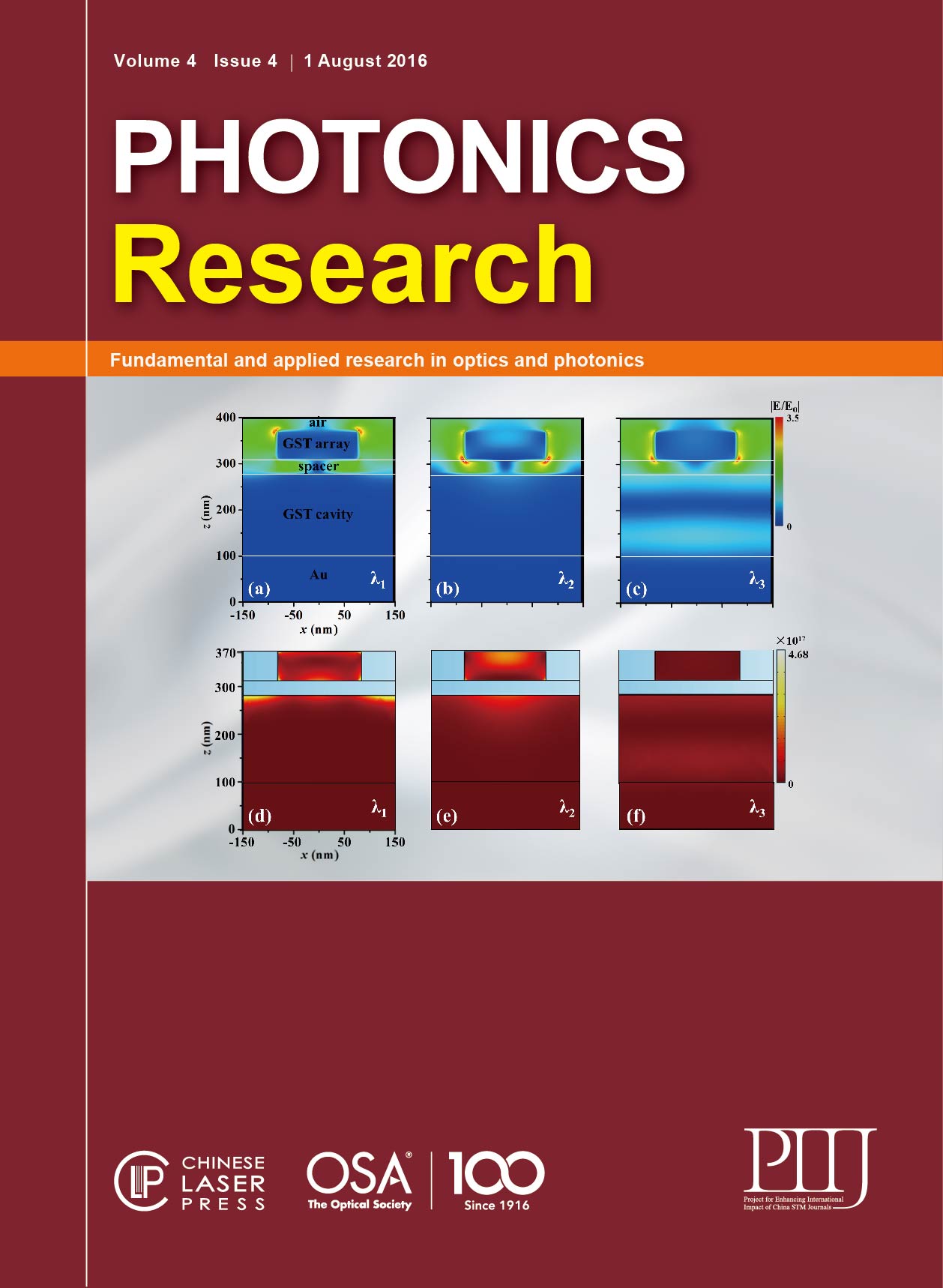 View fulltext
View fulltext
We demonstrate an integrated all-fiber mid-infrared (mid-IR) supercontinuum (SC) source generated by a 1.95 μm master oscillator power amplifier system and a single-mode ZBLAN (ZrF4–BaF2–LaF3–AlF3–NaF) fiber. The maximum average output power is 10.67 W with spectral bandwidth covering from ~1.9 to 4.1 μm. The single-mode ZBLAN fiber and silica fiber are thermal-spliced to enhance the robustness and practicability of the system. It is, to the best of our knowledge, the first high-power integrated compacted all-fiber mid-IR SC source based on thermal-spliced silica fiber and ZBLAN fiber.Postdoctoral Science Foundation (2015M572353, 2015M582407); Natural Science Foundation of SZU (201457); National Natural Science Foundation of China (NSFC)(61275144, 61308049); Science and Technology Projects of Shenzhen City (JCYJ20130329103213543, JCYJ20140418091413568, JCYJ20150324140036862).
Angular color uniformity (ACU) is a key factor used to evaluate the light quality of white-light emitting diodes (LEDs). In this study, a novel double remote micro-patterned phosphor film (double RMPP film) was used to enhance the ACU of a remote phosphor (RP) down-light lamp. A conventional RP film and remote phosphor film with single micro-patterned film (single RMPP film) also were examined for comparison. The angular correlated color temperature (CCT) distributions and the optical performance of the films were experimentally measured. The measurement results showed that double RMPP film configuration exhibited better color uniformity with a CCT deviation of only 441 K, compared with 556 K for the single RMPP film configuration and 1390 K for the RP film configuration. A simulation based on FDTD and ray tracing combined method also confirmed the ACU improvement. In addition, compared with the conventional RP film, the luminous efficiency of single and double RMPP film configurations was increased by 6.68% and 4.69%, respectively, at a driving current of 350 mA. The enhancement of the ACU and luminous efficiency are due to the scattering and mixing effect of the micropatternedfilm. Moreover, the double RMPP film configuration had better CCT stability at different currents than the other two configurations. The results demonstrated the effectiveness and superiority of double RMPP film in white LED applications.
We numerically demonstrate a novel ultra-broadband polarization-independent metamaterial perfect absorber in the visible and near-infrared region involving the phase-change material Ge2Sb2Te5 (GST). The novel perfect absorber scheme consists of an array of high-index strong-absorbance GST square resonators separated from a continuous Au substrate by a low-index lossless dielectric layer (silica) and a high-index GST planar cavity. Three absorption peaks with the maximal absorbance up to 99.94% are achieved, owing to the excitation of plasmon-like dipolar or quadrupole resonances from the high-index GST resonators and cavity resonances generated by the GST planar cavity. The intensities and positions of the absorption peaks show strong dependence on structural parameters. A heat transfer model is used to investigate the temporal variation of temperature within the GST region. The results show that the temperature of amorphous GST can reach up to 433 K of the phase transition temperature from room temperature in just 0.37 ns with a relatively low incident light intensity of 1.11 × 108 W∕m2, due to the enhanced ultra-broadband light absorbance through strong plasmon resonances and cavity resonance in the absorber. The study suggests a feasible means to lower the power requirements for photonic devices based on a thermal phase change via engineering ultra-broadband light absorbers.
We present an equivalent circuit model for a silicon carrier-depletion single-drive push–pull Mach–Zehnder modulator (MZM) with its traveling wave electrode made of coplanar strip lines. In particular, the partialcapacitance technique and conformal mapping are used to derive the capacitance associated with each layer. The PN junction is accurately modeled with the fringe capacitances taken into consideration. The circuit model is validated by comparing the calculations with the simulation results. Using this model, we analyze the effect of several key parameters on the modulator performance to optimize the design. Experimental results of MZMs confirm the theoretical analysis. A 56 Gb/s on–off keying modulation and a 40 Gb/s binary phase-shift keying modulation are achieved using the optimized modulator.












